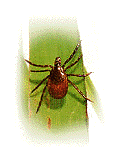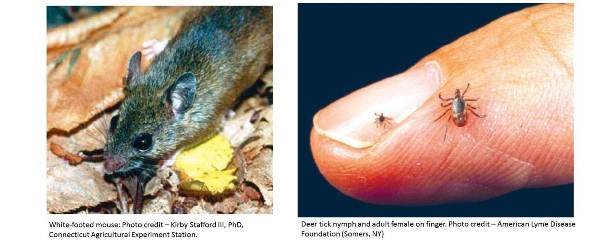Lyme Disease Transmission

How is Lyme disease spread?
Lyme disease is an illness caused by bacteria called Borrelia burgdorferi. In Connecticut, these bacteria are spread through the bite of infected Ixodes scapularis (black-legged or deer) ticks. When in its nymphal stage, the ticks are about the size of a poppy seed or the period at the end of this sentence, and are very difficult to see. Not all I. scapularis ticks are infected. Tick infection rates range between 10%-35% in Connecticut. Ticks get the bacteria from white-footed mice, other rodents and some birds. Deer serve only as a meal for adult ticks.

Ticks are found in grassy and overgrown areas where they wait to grasp onto warm bodies that pass by; they do not jump, fly or drop out of trees. Ticks are generally picked up on the lower legs and crawl up the body to find a feeding spot. The bite of a tick is usually painless, and because of this people are unaware they have been bitten. Statistics show that most people become infected during the months of May-July when nymphs are searching for a meal. Nymphal and adult female ticks need to feed for more than 24 hours before the bacteria are transmitted and infection can occur. Infected un-engorged (flat) ticks do not transmit the bacteria.
Preventing ticks from getting on your body, or removing them as soon as possible will help prevent the spread of Lyme disease.

- Engorged female lays eggs.
- Larvae hatch and feed on small mammals when they can become infected with Borrelia burgdorferi.
- Larvae molt inot nymphs.
- Nymphs overwinter.
- Nymphs attach and feed on small mammals, birds, pets, and humans when most infections occur.
- Adults attach and feed on larger mammas (mainly deer).
- Adults remain active on warm winter days with peak of activity in Spring.
- Engorged female lays eggs and adults die.
For additional information on the tick life cycle, please visit the Centers for Disease Control and Prevention website.
To contact the Epidemiology and Emerging Infections Program, please call 860-509-7994.

